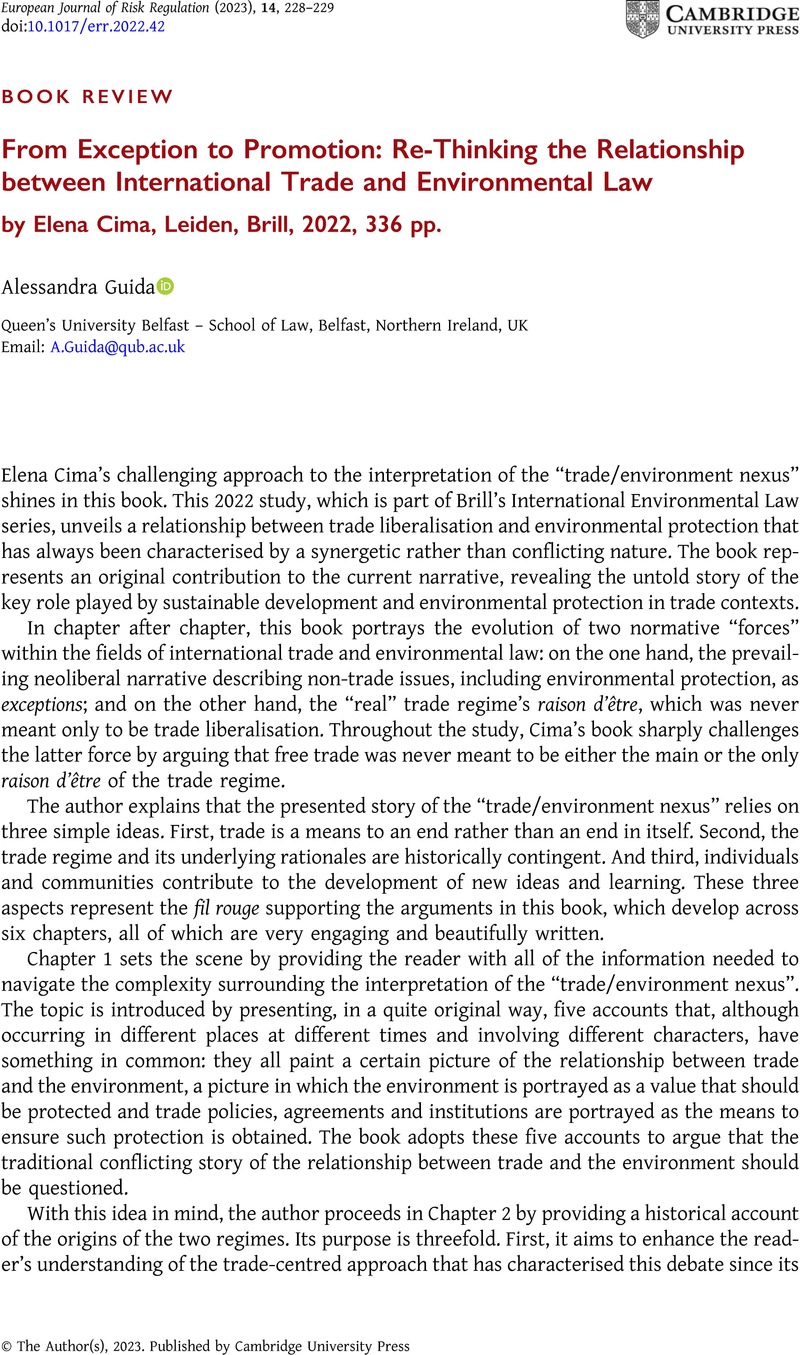No CrossRef data available.
Article contents
From Exception to Promotion: Re-Thinking the Relationship between International Trade and Environmental Law by Elena Cima, Leiden, Brill, 2022, 336 pp.
Review products
From Exception to Promotion: Re-Thinking the Relationship between International Trade and Environmental Law by Elena Cima, Leiden, Brill, 2022, 336 pp.
Published online by Cambridge University Press: 06 January 2023
Abstract
An abstract is not available for this content so a preview has been provided. Please use the Get access link above for information on how to access this content.

- Type
- Book Review
- Information
- Copyright
- © The Author(s), 2023. Published by Cambridge University Press


